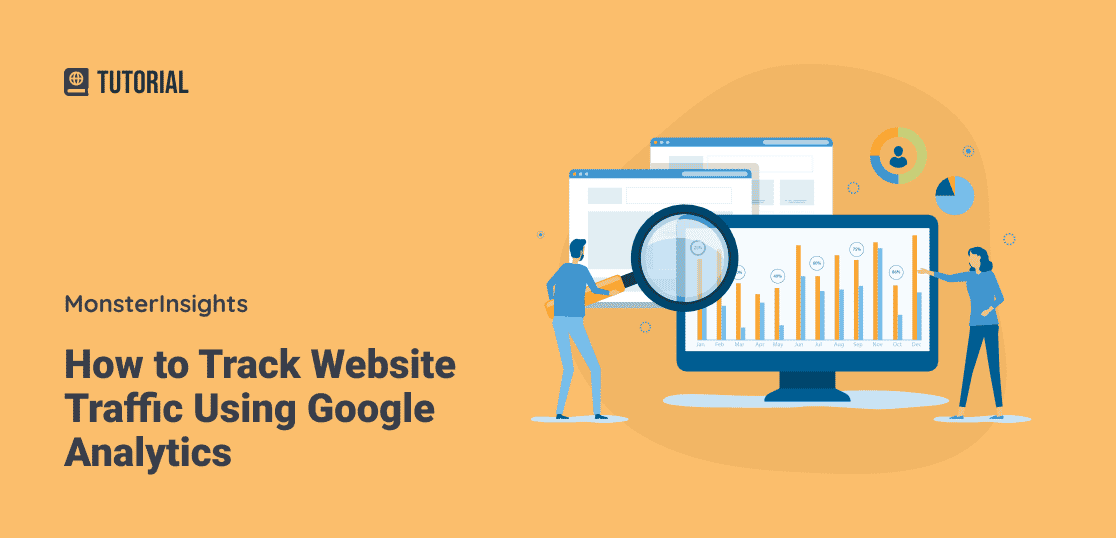The Truth Regarding What Is Not Considered a Source in Google Analytics by Default
The Truth Regarding What Is Not Considered a Source in Google Analytics by Default
Blog Article
Taking Advantage Of the Full Possible of Google Analytics for Organization Development
In the realm of electronic company strategies, Google Analytics stands as a stalwart device for companies seeking to browse the intricacies of online information. As companies strive to make educated decisions and enhance their online existence, the question develops: How can one genuinely unlock the complete potential of Google Analytics to thrust service growth and accomplish strategic purposes?
Establishing up Google Analytics Account
Establishing your Google Analytics account is an essential first step in effectively tracking and analyzing information for your company development. To begin, see the Google Analytics website and check in with your Google account. Next off, click "Start completely free" and comply with the motivates to set up your account by supplying details regarding your website, such as the name, URL, sector category, and reporting time zone.
After finishing these actions, you will receive a monitoring ID, which is a special code that you need to contribute to your internet site. This code allows Google Analytics to gather information and generate records based upon the activity occurring on your website. If you are utilizing a system like WordPress., you can include this monitoring ID by hand to your internet site's HTML code or make use of a plugin.

Recognizing Key Metrics

Website Traffic Sources: Recognizing where your internet site web traffic is originating from (direct, organic search, social networks, references) helps in tailoring your advertising methods to concentrate on networks that drive one of the most visitors.
Bounce Rate: This metric shows the percent of visitors who browse far from your site after checking out only one page - What Is Not Considered A Source In Google Analytics By Default. A high bounce rate may indicate concerns with site functionality or web content significance
Conversion Rate: Tracking the percentage of visitors who finish a preferred activity, such as purchasing or signing up for an e-newsletter, is essential for examining the performance of your internet site in attaining organization objectives.
Pageviews: Checking the variety of times each web page on your website is checked out provides insights into preferred material and individual involvement degrees.
Executing Customized Monitoring
To improve the depth of insights collected from Google Analytics, companies can benefit dramatically by including personalized monitoring approaches customized to their details goals. Personalized monitoring enables services to track special data points that are not captured by default in Google Analytics. By implementing custom tracking, companies can acquire an extra thorough understanding of customer behavior, conversion patterns, and other key metrics that are critical for making informed service decisions.
One common technique of custom tracking is establishing occasion monitoring to keep track of certain individual communications on a site, such as clicks on switches, video views, or downloads. This makes it possible for services to evaluate the efficiency of their internet site aspects and advertising campaigns more precisely.
In addition, services can produce custom measurements and metrics to track and evaluate information that specifies to their market or organization design. For example, an e-commerce firm might establish up custom tracking to keep track of the performance of different item categories or client segments.
Assessing Conversion Courses
By leveraging the understandings acquired from personalized tracking techniques, organizations can currently concentrate on assessing conversion paths to further refine their understanding of individual habits and enhance their conversion methods. Assessing conversion courses entails examining the sequence of steps users take before completing a desired action, such as making a purchase or signing up for a service. By delving into the conversion paths within Google Analytics, businesses can identify common paths that cause conversions, along with any kind of traffic jams or drop-off factors that might prevent advice the conversion procedure.
Via the evaluation of conversion courses, organizations can gain valuable insights into the performance of their website design, content, and calls to activity. This information can assist organizations make educated decisions concerning where to assign sources for optimal effect on conversion rates. By recognizing the different paths users tackle their journey to conversion, companies can customize their advertising and marketing methods to better overview individuals through the conversion channel and eventually enhance their overall conversion prices.
Using Advanced Functions
Use the full potential of Google Analytics by discovering its sophisticated attributes to enhance your service's data-driven decision-making capabilities. Custom-made records allow you to customize the information showed to fulfill your particular organization needs and purposes.

In addition, progressed segmentation allows you examine different parts of your site's website traffic to recognize patterns, possibilities, and patterns. By segmenting your target market based on various standards like demographics, habits, or traffic resources, you can better recognize their preferences and customize your advertising and marketing approaches appropriately. Leveraging these advanced functions in Google Analytics can provide useful insights that drive notified decision-making and ultimately add to your business's growth.
Verdict
Finally, utilizing the complete capacity of Google Analytics for business development involves establishing an account, comprehending key metrics, applying custom tracking, assessing conversion paths, and using innovative features. By using these methods effectively, companies can get valuable insights into their web site efficiency, customer behavior, and conversion rates. This data-driven technique can help companies make educated decisions, maximize their on-line presence, and eventually attain sustainable growth.
As services make every effort to make informed choices and maximize their online visibility, the question develops: How can one really unlock the full capacity of Google Analytics to push organization growth and achieve tactical goals?To enhance the depth of insights gathered from Google Analytics, companies can profit significantly by integrating custom tracking methods tailored to their specific objectives. Custom monitoring permits organizations to track one-of-a-kind address information factors that are not caught by default in Google Analytics. By delving into the conversion paths within Google Analytics, companies can determine common routes that lead to conversions, as well as any bottlenecks or drop-off factors that might prevent the conversion process.
In final thought, taking advantage of the full potential of Google Analytics for organization development includes setting up an account, understanding vital metrics, carrying out customized tracking, analyzing conversion courses, and using advanced features.
Report this page